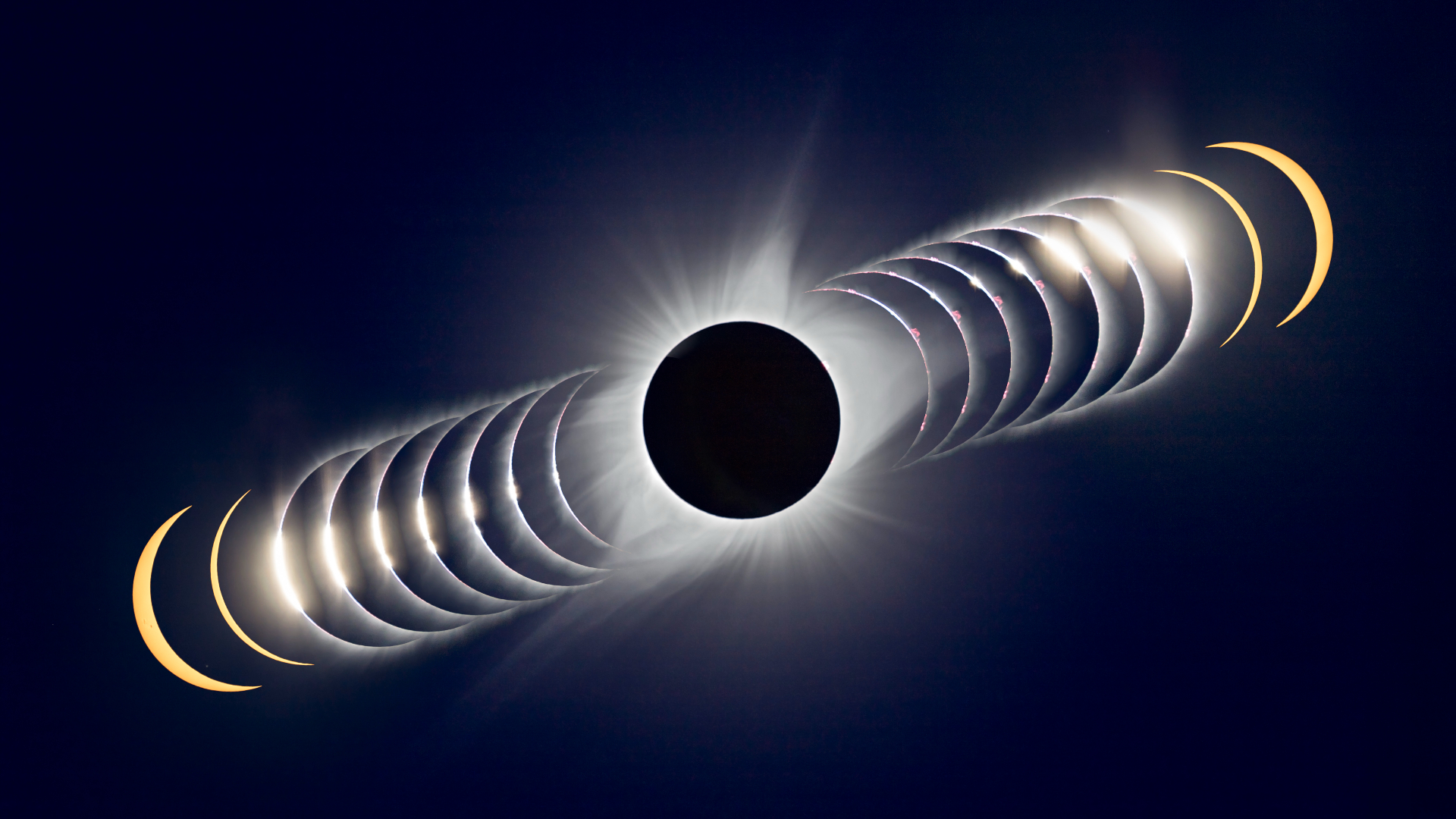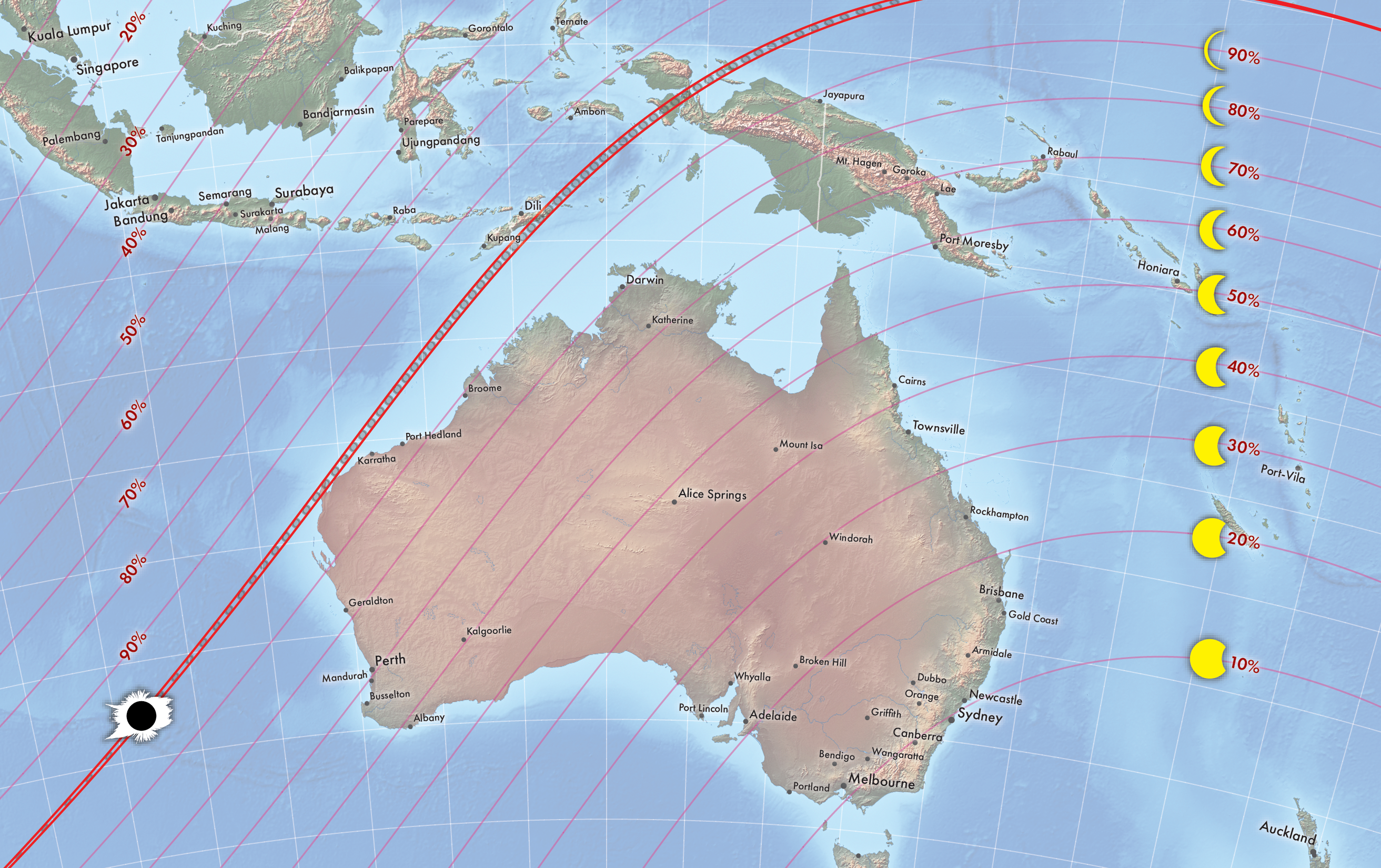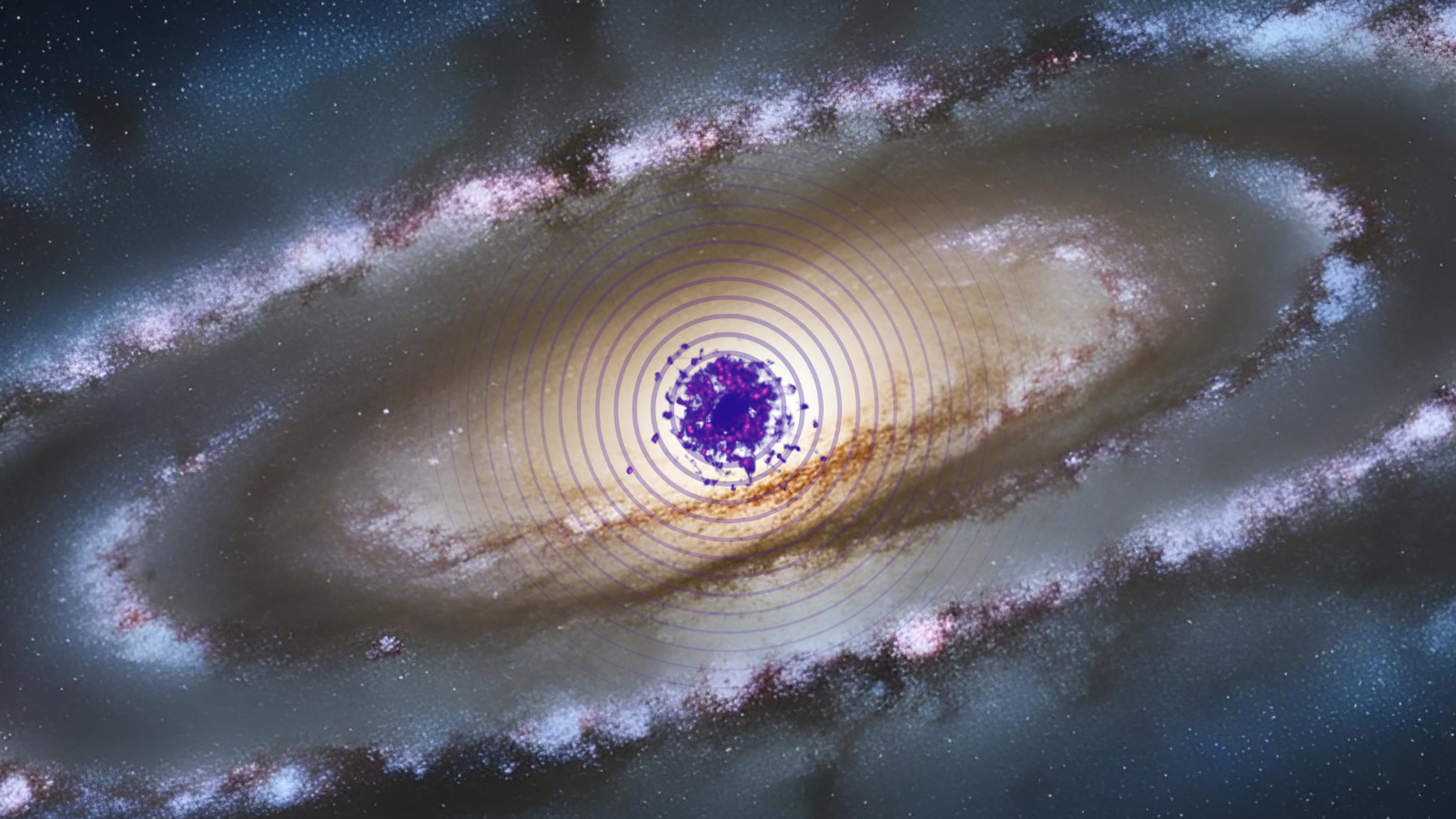A rare hybrid solar eclipse occurs today. Here's how to watch it online for free.
Hybrid solar eclipses happen just a few times per century on average.

Update for 10:00 a.m. on April 10: The rare hybrid solar eclipse is tonight! Only seven of this type of eclipse will occur in the entire 21st century. Weather still looks clear for Perth, Australia, one of the locations that will be able to see the eclipse. We've listed several livestream options below for anyone who isn't in the path of this rare eclipse but doesn't want to miss it. The eclipse will begin at 9:36 p.m. EDT on April 19 (0136 GMT on April 20). Watch it live here on Space.com.
A rare celestial event is happening this week.
On Thursday (April 20), the moon will block out the sun during what is known as a hybrid solar eclipse. This type of eclipse shifts from total solar eclipse to annular (ring-shaped) as the moon's shadow moves across the surface of the Earth. The last hybrid solar eclipse happened in 2013, and the next will occur in 2031. After that, future skywatchers will have to wait until March 23, 2164.
The event will be visible from the South Pacific, with the moon's shadow passing over western Australia, East Timor and Indonesia beginning at 9:36 p.m. EDT on April 19 (0136 GMT on April 20) and ending at 2:59 a.m. EDT (0659 GMT) the next day, according to In the Sky.
If the path of the eclipse doesn't pass over your location, you're still in luck: There will be multiple free livestreams bringing the celestial action right to the screen of your choice.
Related: Get ready for a rare hybrid solar eclipse on April 20
TimeAndDate.com
For example, TimeAndDate.com will host a livestream on their YouTube channel beginning at 9:30 p.m. EDT on April 19 (0130 GMT on April 20).
Breaking space news, the latest updates on rocket launches, skywatching events and more!
Gravity Discovery Centre & Observatory
The Gravity Discovery Centre & Observatory near Perth, Australia will also host a livestream of the eclipse on their YouTube channel beginning at 10 p.m. EDT on April 19 (0200 GMT on April 20).
NASA TV
NASA will host a livestream of the eclipse on their NASA TV YouTube channel. The agency's coverage will begin at 10:30 p.m. EDT on April 19 (0230 GMT on April 20).
There are only two locations on Earth from which the hybrid eclipse will be seen transitioning from annular to total and then back to annular again; unfortunately, both are found in remote areas of the ocean.
No matter if you'll be watching the eclipse in person or using one of these livestreams, remember: Don't ever look at the sun with the unaided eye. Doing so can cause permanent damage to one's vision — even during an eclipse. Be sure to check out our guide on how to observe the sun safely if you plan on viewing this or any other eclipse.
If you plan on seeing this or any other eclipse in person, these manufacturers sell reliable solar eclipse glasses and solar filters that comply with international standards.
Another method of observing the sun safely is by using a pinhole camera, a device you can easily make at home.
If you're looking to take photos of the eclipse or any other celestial event, check out our guide on how to photograph a solar eclipse, as well as our best cameras for astrophotography and best lenses for astrophotography.
Follow us @Spacedotcom, or on Facebook and Instagram.
Celestron EclipSmart 10x42 Solar Viewing Binoculars
These aren't any ordinary binoculars from Celestron, but multi-coated solar safe binoculars with BK-7 optics and ISO 12312–2 compliant for solar observing. View the sun safely for under $100.

Brett is curious about emerging aerospace technologies, alternative launch concepts, military space developments and uncrewed aircraft systems. Brett's work has appeared on Scientific American, The War Zone, Popular Science, the History Channel, Science Discovery and more. Brett has degrees from Clemson University and the University of North Carolina at Charlotte. In his free time, Brett enjoys skywatching throughout the dark skies of the Appalachian mountains.





